Accept all cookies Accept only essential cookies See our Cookie Notice

About ESA
The European Space Agency (ESA) is Europe’s gateway to space. Its mission is to shape the development of Europe’s space capability and ensure that investment in space continues to deliver benefits to the citizens of Europe and the world.
Highlights
ESA - United space in Europe
This is ESA ESA facts Member States & Cooperating States Funding Director General Top management For Member State Delegations European vision European Space Policy ESA & EU Space Councils Responsibility & Sustainability Annual Report Calendar of meetings Corporate newsEstablishments & sites
ESA Headquarters ESA ESTEC ESA ESOC ESA ESRIN ESA EAC ESA ESAC Europe's Spaceport ESA ESEC ESA ECSAT Brussels Office Washington OfficeWorking with ESA
Business with ESA ESA Commercialisation Gateway Law at ESA Careers Cyber resilience at ESA IT at ESA Newsroom Partnerships Merchandising Licence Education Open Space Innovation Platform Integrity and Reporting Administrative Tribunal Health and SafetyMore about ESA
History ESA Historical Archives Exhibitions Publications Art & Culture ESA Merchandise Kids Diversity ESA Brand Centre ESA ChampionsSpace in Member States
Find out more about space activities in our 23 Member States, and understand how ESA works together with their national agencies, institutions and organisations.
Science & Exploration
Exploring our Solar System and unlocking the secrets of the Universe
Go to topicAstronauts
Missions
Juice Euclid Webb Solar Orbiter BepiColombo Gaia ExoMars Cheops Exoplanet missions More missionsActivities
International Space Station Orion service module Gateway Concordia Caves & Pangaea BenefitsLatest
Space Safety
Protecting life and infrastructure on Earth and in orbit
Go to topicAsteroids
Asteroids and Planetary Defence Asteroid danger explained Flyeye telescope: asteroid detection Hera mission: asteroid deflection Near-Earth Object Coordination CentreSpace junk
About space debris Space debris by the numbers Space Environment Report In space refuelling, refurbishing and removingSafety from space
Clean Space ecodesign Zero Debris Technologies Space for Earth Supporting Sustainable DevelopmentLatest
Applications
Using space to benefit citizens and meet future challenges on Earth
Go to topicObserving the Earth
Observing the Earth Future EO Copernicus Meteorology Space for our climate Satellite missionsCommercialisation
ESA Commercialisation Gateway Open Space Innovation Platform Business Incubation ESA Space SolutionsEnabling & Support
Making space accessible and developing the technologies for the future
Go to topicBuilding missions
Space Engineering and Technology Test centre Laboratories Concurrent Design Facility Preparing for the future Shaping the Future Discovery and Preparation Advanced Concepts TeamSpace transportation
Space Transportation Ariane Vega Space Rider Future space transportation Boost! Europe's Spaceport Launches from Europe's Spaceport from 2012Latest
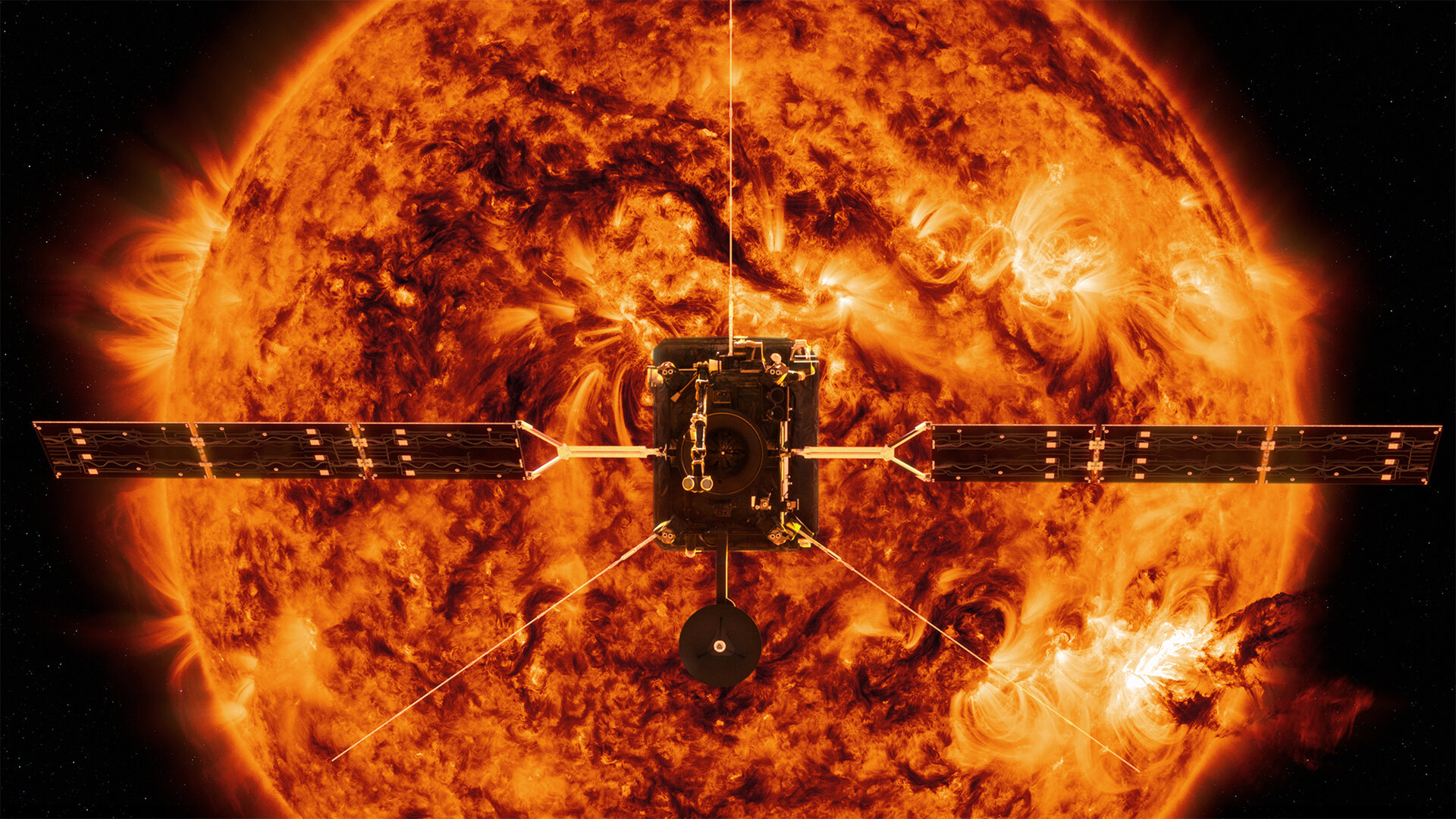
Facing the Sun
Thank you for liking
You have already liked this page, you can only like it once!
Now being fitted with its state-of-the-art instruments, ESA’s Solar Orbiter is set to provide new views of our star, in particular providing close-up observations of the Sun’s poles.
Following its launch in February 2019 and three-year journey using gravity swingbys at Earth and Venus, Solar Orbiter will operate from an elliptical orbit around the Sun. At its closest it will approach our star within 42 million kilometres, closer than planet Mercury.
An artist’s impression of Solar Orbiter in front of the stormy Sun is depicted here. The image of the Sun is based on one taken by NASA’s Solar Dynamics Observatory. It captures the beginning of a solar eruption that took place on 7 June 2011. At lower right, dark filaments of plasma arc away from the Sun. During this particular event, it watched the plasma lift off, then rain back down to create ‘hot spots’ that glowed in ultraviolet light.
Solar Orbiter’s over-arching mission goals are to examine how the Sun creates and controls the heliosphere, the extended atmosphere of the Sun in which we reside, and the effects of solar activity on it. The spacecraft will combine in situ and remote sensing observations close to the Sun to gain new information about solar activity and how eruptions produce energetic particles, what drives the solar wind and the coronal magnetic field, and how the Sun’s internal dynamo works.
Its 10 scientific instruments are in the final stages of being added to the spacecraft before extensive tests to prepare it for the 2019 launch from Cape Canaveral, USA.
Solar Orbiter is an ESA-led mission with NASA participation.
-
CREDIT
ESA/ATG medialab; Sun: NASA/SDO/ P. Testa (CfA) -
LICENCE
ESA Standard Licence
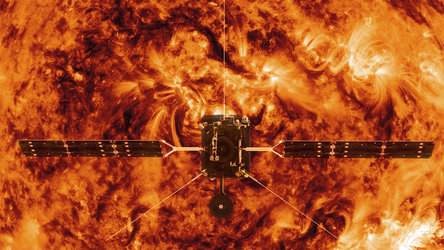
Solar Orbiter facing the Sun close up

Solar Orbiter facing the Sun
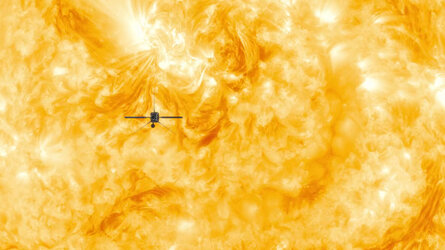
Solar Orbiter facing the Sun
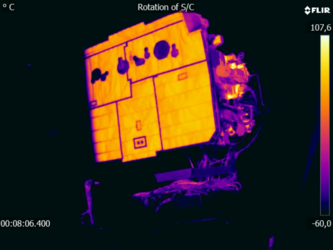
Solar Orbiter during thermal-vacuum tests
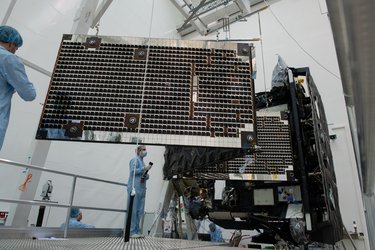














 Germany
Germany
 Austria
Austria
 Belgium
Belgium
 Denmark
Denmark
 Spain
Spain
 Estonia
Estonia
 Finland
Finland
 France
France
 Greece
Greece
 Hungary
Hungary
 Ireland
Ireland
 Italy
Italy
 Luxembourg
Luxembourg
 Norway
Norway
 The Netherlands
The Netherlands
 Poland
Poland
 Portugal
Portugal
 Czechia
Czechia
 Romania
Romania
 United Kingdom
United Kingdom
 Slovenia
Slovenia
 Sweden
Sweden
 Switzerland
Switzerland

























